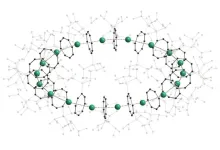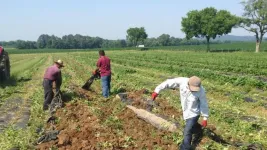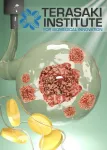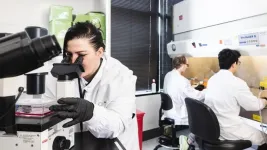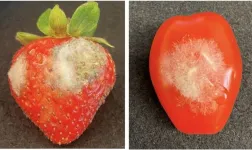(Press-News.org) The western U.S., particularly the Southwest, has experienced a notable increase in record-breaking high temperatures over recent decades, with recurring drought and heatwaves. These conditions have resulted in severe consequences for both human and nature systems, including dire water shortages, rampant wildfires, substantial agricultural losses, and increased human mortality. These regions, dominated by water-limited ecosystems, face exacerbated water stress due to more frequent and protracted droughts and heatwaves, which can profoundly impair ecosystem photosynthesis and carbon uptake, in turn affecting the global carbon cycle.
Investigating vegetation photosynthesis at various time scales provides valuable insights into vegetation growth, carbon uptake, and environmental interactions. Traditional polar-orbiting satellite observations have aided in monitoring gross primary production (GPP) at longer scales (e.g., monthly, annual), but they are limited in capturing diurnal variations. Fortunately, in recent years, emerging new-generation geostationary satellites with sub-daily sampling capability, provide unique opportunities to study diurnal variations of vegetation photosynthesis and their responses to environmental conditions over the course of day at large spatial scales.
Here we estimate hourly GPP across the Conterminous U.S. based on observations from Geostationary Operational Environmental Satellite-R (GOES-R), and then investigate how the diurnal cycle of photosynthesis responds to the severe late-summer heatwave of 2020. This study provides a comprehensive exploration of heatwave impacts on the diurnal dynamics of photosynthesis at a continental scale, revealing a widespread midday and afternoon depression of photosynthesis in dryland ecosystems during the heatwave. We examine the environmental regulation of diurnal photosynthesis dynamics across diverse ecosystems, and illustrate how current radiation-based methods for upscaling polar-orbiting satellite snapshots to daily means may under- or overestimate daily GPP.
□ Widespread midday and afternoon depression in ecosystem photosynthesis during the heatwave
We found a widespread midday and afternoon depression in ecosystem photosynthesis during the heatwave in the western United States. Diurnal centroid (CGPP) and peak hour of GPP shift toward earlier morning for the majority of the western regions, and the ratio of afternoon GPP to morning GPP also shows a marked decline. The shift in diurnal metrics positively correlates to the daily GPP change, implying that the morning shift in diurnal metrics generally results in a decrease in daily total GPP.
The diurnal metrics exhibit divergent responses to the heatwave across vegetation types and along aridity gradients. Overall, shrubland and grassland are more sensitive to the heatwave than the other vegetation types. The impact of the heatwave on the diurnal cycle of photosynthesis is predominantly observed in arid and semiarid regions with an aridity index (AI) below 0.6. We found that the largest GPP loss occurred at noon or during the afternoon for the majority of western regions, later than the GPP peak hour during the heatwave year, further substantiating the asymmetric influence of heatwaves on diurnal photosynthesis fluctuations.
□ Environmental controls on diurnal behavior of ecosystem photosynthesis
The regional-mean daily vapor pressure deficit (VPD) and land surface temperature (LST) show strong negative relationships with regional-mean CGPP, suggesting that the increase of heat and water stress contributes to an earlier coming of diurnal CGPP. The pixel-level relationships for different vegetation types show that shrubland has the strongest negative relationships and largest negative slopes between CGPP and VPD or LST among all the vegetation types, followed by evergreen needleleaf forest (ENF) and grassland.
□ Geostationary satellite-based method better estimates daily GPP and GPP loss during the heatwave
Our results clearly demonstrate that, using a snapshot from the earlier part of the morning (e.g., 8 a.m.) and solely considering radiation variations for daily upscaling lead to an overestimation of daily GPP across the majority of the United States. Conversely, using an afternoon observation for daily upscaling (e.g., 2 p.m.) results in an underestimation of daily GPP. The upscaling method relies only on radiation and does not account for changes induced by varying environmental stresses and light use efficiency throughout the day.
Biases stemming from the radiation-based upscaling method can also affect the calculation of GPP difference between normal and heatwave years. We further calculate the regional total daily GPP for drylands from 14 to 19 August for both years. Both daily GPP upscaling from all single hours and GPP capture the decline of dryland productivity during the heatwave. The estimated GPP loss for the entire region during the heatwave period based on GOES-R is approximately 0.4 Tg C per day, while GPP loss based on upscaling from different hours ranges from 0.25 to 0.6 Tg C per day.
The western U.S., particularly the Southwest, has experienced a notable increase in record-breaking high temperatures over recent decades, with recurring drought and heatwaves. These conditions have resulted in severe consequences for both human and nature systems, including dire water shortages, rampant wildfires, substantial agricultural losses, and increased human mortality. These regions, dominated by water-limited ecosystems, face exacerbated water stress due to more frequent and protracted droughts and heatwaves, which can profoundly impair ecosystem photosynthesis and carbon uptake, in turn affecting the global carbon cycle.
Investigating vegetation photosynthesis at various time scales provides valuable insights into vegetation growth, carbon uptake, and environmental interactions. Traditional polar-orbiting satellite observations have aided in monitoring gross primary production (GPP) at longer scales (e.g., monthly, annual), but they are limited in capturing diurnal variations. Fortunately, in recent years, emerging new-generation geostationary satellites with sub-daily sampling capability, provide unique opportunities to study diurnal variations of vegetation photosynthesis and their responses to environmental conditions over the course of day at large spatial scales.
Here we estimate hourly GPP across the Conterminous U.S. based on observations from Geostationary Operational Environmental Satellite-R (GOES-R), and then investigate how the diurnal cycle of photosynthesis responds to the severe late-summer heatwave of 2020. This study provides a comprehensive exploration of heatwave impacts on the diurnal dynamics of photosynthesis at a continental scale, revealing a widespread midday and afternoon depression of photosynthesis in dryland ecosystems during the heatwave. We examine the environmental regulation of diurnal photosynthesis dynamics across diverse ecosystems, and illustrate how current radiation-based methods for upscaling polar-orbiting satellite snapshots to daily means may under- or overestimate daily GPP.
□ Widespread midday and afternoon depression in ecosystem photosynthesis during the heatwave
We found a widespread midday and afternoon depression in ecosystem photosynthesis during the heatwave in the western United States. Diurnal centroid (CGPP) and peak hour of GPP shift toward earlier morning for the majority of the western regions, and the ratio of afternoon GPP to morning GPP also shows a marked decline. The shift in diurnal metrics positively correlates to the daily GPP change, implying that the morning shift in diurnal metrics generally results in a decrease in daily total GPP.
The diurnal metrics exhibit divergent responses to the heatwave across vegetation types and along aridity gradients. Overall, shrubland and grassland are more sensitive to the heatwave than the other vegetation types. The impact of the heatwave on the diurnal cycle of photosynthesis is predominantly observed in arid and semiarid regions with an aridity index (AI) below 0.6. We found that the largest GPP loss occurred at noon or during the afternoon for the majority of western regions, later than the GPP peak hour during the heatwave year, further substantiating the asymmetric influence of heatwaves on diurnal photosynthesis fluctuations.
□ Environmental controls on diurnal behavior of ecosystem photosynthesis
The regional-mean daily vapor pressure deficit (VPD) and land surface temperature (LST) show strong negative relationships with regional-mean CGPP, suggesting that the increase of heat and water stress contributes to an earlier coming of diurnal CGPP. The pixel-level relationships for different vegetation types show that shrubland has the strongest negative relationships and largest negative slopes between CGPP and VPD or LST among all the vegetation types, followed by evergreen needleleaf forest (ENF) and grassland.
□ Geostationary satellite-based method better estimates daily GPP and GPP loss during the heatwave
Our results clearly demonstrate that, using a snapshot from the earlier part of the morning (e.g., 8 a.m.) and solely considering radiation variations for daily upscaling lead to an overestimation of daily GPP across the majority of the United States. Conversely, using an afternoon observation for daily upscaling (e.g., 2 p.m.) results in an underestimation of daily GPP. The upscaling method relies only on radiation and does not account for changes induced by varying environmental stresses and light use efficiency throughout the day.
Biases stemming from the radiation-based upscaling method can also affect the calculation of GPP difference between normal and heatwave years. We further calculate the regional total daily GPP for drylands from 14 to 19 August for both years. Both daily GPP upscaling from all single hours and GPP capture the decline of dryland productivity during the heatwave. The estimated GPP loss for the entire region during the heatwave period based on GOES-R is approximately 0.4 Tg C per day, while GPP loss based on upscaling from different hours ranges from 0.25 to 0.6 Tg C per day.
END
New-generation geostationary satellite reveals widespread midday depression in dryland photosynthesis during 2020 western US heatwave
Geostationary satellite reveals the asymmetrical impact of heatwaves on plant diurnal photosynthesis at the continental scale
2023-08-03
ELSE PRESS RELEASES FROM THIS DATE:
Nanorings: New building blocks for chemistry
2023-08-03
Sandwich complexes were developed about 70 years ago and have a sandwich-like structure. Two flat aromatic organic rings (the “slices of bread”) are filled with a single, central metal atom in between. Like the slices of bread, both rings are arranged in parallel. Adding further layers of ‘bread’ and ‘filling’ produces triple or multiple sandwiches. “These compounds are among the most important complexes used in modern organometallic chemistry,” says Professor Peter ...
Rural environment supports children’s immune systems
2023-08-03
Children raised in rural environments who spend a lot of time outdoors with some exposure to animals grow to have better regulated immune systems than children living in urban environments, a new study has found.
Research led by APC Microbiome Ireland (APC), a world-leading SFI research centre and University College Cork (UCC), has shown that early life immune development is highly dependent on a child’s living environment and lifestyle factors. Researchers say that the immune system needs to learn how not to over-respond ...
Novel proton-conductive membranes for automobile fuel cells
2023-08-03
Fuel cells are compact energy conversion units that utilize clean energy sources like hydrogen and convert them into electricity through a series of oxidation–reduction reactions. Specifically, proton exchange membrane fuel cells (PEMFCs), an integral part of electric vehicles, utilize proton-conductive membranes for operation. Unfortunately, these membranes suffer from a trade-off between high durability and high ion conductivity, affecting the lifetime and performance of PEMFCs.
To overcome this issue, scientists ...
UT extension to help Tennessee farmers navigate labor management
2023-08-03
University of Tennessee Extension and GAP Connections recently received a grant from the Southern Extension Risk Management Education Center to launch a series of workshops across the state to help agricultural producers and agribusinesses navigate the intricacies of labor management.
Tennessee’s labor-intensive farming operations are increasingly in need of agricultural labor options, creating challenges for agricultural employers that have transitioned from readily available family labor to scarce hired labor that ...
More girls started puberty early during the COVID-19 pandemic
2023-08-03
WASHINGTON—The number of girls diagnosed with precocious puberty increased during the COVID-19 pandemic due to potential risk factors such as increased screen time and less physical activity, according to a new study published in the Journal of the Endocrine Society.
The number of girls referred to pediatric endocrinologists for precocious puberty has increased significantly over the last two years, potentially due to the COVID-19 pandemic. Precocious puberty is when children's bodies begin to change into adult bodies too soon. They start to develop physical changes before the age of 8 such as breasts ...
It’s 2023, and coming out is, well, complicated
2023-08-03
In an era of unprecedented LGBTQ2+ visibility coupled with incredible backlash, coming out as a sexual minority can be a deeply ambivalent experience, according to new research.
In a study published in Theory and Society, sociologists Dr. Amin Ghaziani and Andy Holmes conducted in-depth interviews with 52 adult Vancouverites about their experiences coming out over the last five years.
We spoke to Dr. Ghaziani (he/him), professor in the UBC department of sociology and Canada Research Chair in Urban Sexualities, about the findings.
Why were you interested in recent experiences of coming out?
Coming out is about sharing your identity with someone, and it’s an ongoing ...
Enhanced tumor modeling using Laponite bioinks for 3D bioprinting
2023-08-03
(LOS ANGELES) – August 3, 2023 - Scientists from the Terasaki Institute for Biomedical Innovation (TIBI) have developed a nanoengineered bioink with improved bonding and cross-linking capabilities for 3D bioprinting of tumor models. A key component of this bioink is Laponite, highly charged, disk-shaped, crystalline nanoparticles. As explained in their recent paper in Biofabrication, these nanoparticles were shown to enhance the biological signaling that occurs in the tumor microenvironment ...
Sharing on Facebook reveals 2 very different news environments
2023-08-03
COLUMBUS, Ohio – A first-of-its-kind study examined 2.2 million news stories shared on Facebook and found that publishers create two very different news environments.
These distinct ecosystems involve low-credibility publishers – those that publish what is sometimes referred to as fake news – versus high-credibility publishers.
Findings showed that while these two types of publishers often pushed out bursts of coverage at the same time – a common feature of news coverage – they were often about different topics, said Kelly Garrett, senior author of the study and professor of communication at The Ohio State University.
“These ...
The Access to Advanced Health Institute receives $18 million award to develop a temperature stable, single-dose chikungunya RNA vaccine through a phase 1 clinical trial
2023-08-03
The Access to Advanced Health Institute Receives $18 Million Award to Develop a Temperature Stable, Single-Dose Chikungunya RNA Vaccine Through a Phase 1 Clinical Trial
KEY POINTS:
The goal of the award is to develop an effective chikungunya vaccine candidate that can reach endemic areas of the world by using AAHI’s innovative RNA platform technology.
The project will demonstrate that classic large-scale manufacturing challenges of live-attenuated vaccines can be overcome by using standard manufacturing equipment and techniques that are easy to tech transfer and scale.
The award supports a first-in-human clinical trial of a dried (lyophilized) ...
A path to defeating crop-killing gray mold without toxic chemicals
2023-08-03
It’s a mold that causes billions in crop losses every year, infecting berries, tomatoes and most other fruits and vegetables. Now, researchers have found a way to defeat the mold without showering toxic chemicals on the crops.
If you’ve ever seen a fuzzy gray strawberry, you’ve seen gray mold. It affects more than 1,400 different plant species, and there is no real cure for it. Being able to control it may hinge on the discovery of lipid “bubbles” secreted by the ...
LAST 30 PRESS RELEASES:
Patients with clonal hematopoiesis have increased heart disease risk following cancer treatment
Stem cell therapy for stroke shows how cells find their way in the brain
Environment: Up to 4,700 tonnes of litter flows down the Rhine each year
Maternal vaccine receipt and infant hospital and emergency visits for influenza and pertussis
Interim safety of RSVpreF vaccination during pregnancy
Stem cell engineering breakthrough paves way for next-generation living drugs
California grants $7.4 million to advance gene-edited stem cell therapy for Friedreich’s ataxia
Victoria’s Secret grant backs cutting-edge ovarian cancer research
Research paves the way for safer colonoscopy bowel prep for people with compromised gut health
JMIR Publications and Sweden's National Library announce renewal and expansion of flat-fee unlimited open access partnership for 2026
A new 3D-printed solar cell that’s transparent and color-tunable
IV iron is the cost-effective treatment for women with iron deficiency anemia and heavy menstrual bleeding
Doing good pays off: Environmentally and socially responsible companies drive value and market efficiency
City of Hope and Cellares to automate manufacturing of solid tumor CAR T cell therapy
Short-circuiting pancreatic cancer
Groundbreaking mapping: how many ghost particles all the Milky Way’s stars send towards Earth
JBNU researchers propose hierarchical porous copper nanosheet-based triboelectric nanogenerators
A high-protein diet can defeat cholera infection
A more accurate way of calculating the value of a healthy year of life
What causes some people’s gut microbes to produce high alcohol levels?
Global study reveals widespread burning of plastic for heating and cooking
MIT study shows pills that communicate from the stomach could improve medication adherence
Searching for the centromere: diversity in pathways key for cell division
Behind nature’s blueprints
Researchers search for why some people’s gut microbes produce high alcohol levels
Researchers find promising new way to boost the immune response to cancer
Coffee as a staining agent substitute in electron microscopy
Revealing the diversity of olfactory receptors in hagfish and its implications for early vertebrate evolution
Development of an ultrasonic sensor capable of cuffless, non-invasive blood pressure measurement
Longer treatment with medications for opioid use disorder is associated with greater probability of survival
[Press-News.org] New-generation geostationary satellite reveals widespread midday depression in dryland photosynthesis during 2020 western US heatwaveGeostationary satellite reveals the asymmetrical impact of heatwaves on plant diurnal photosynthesis at the continental scale
